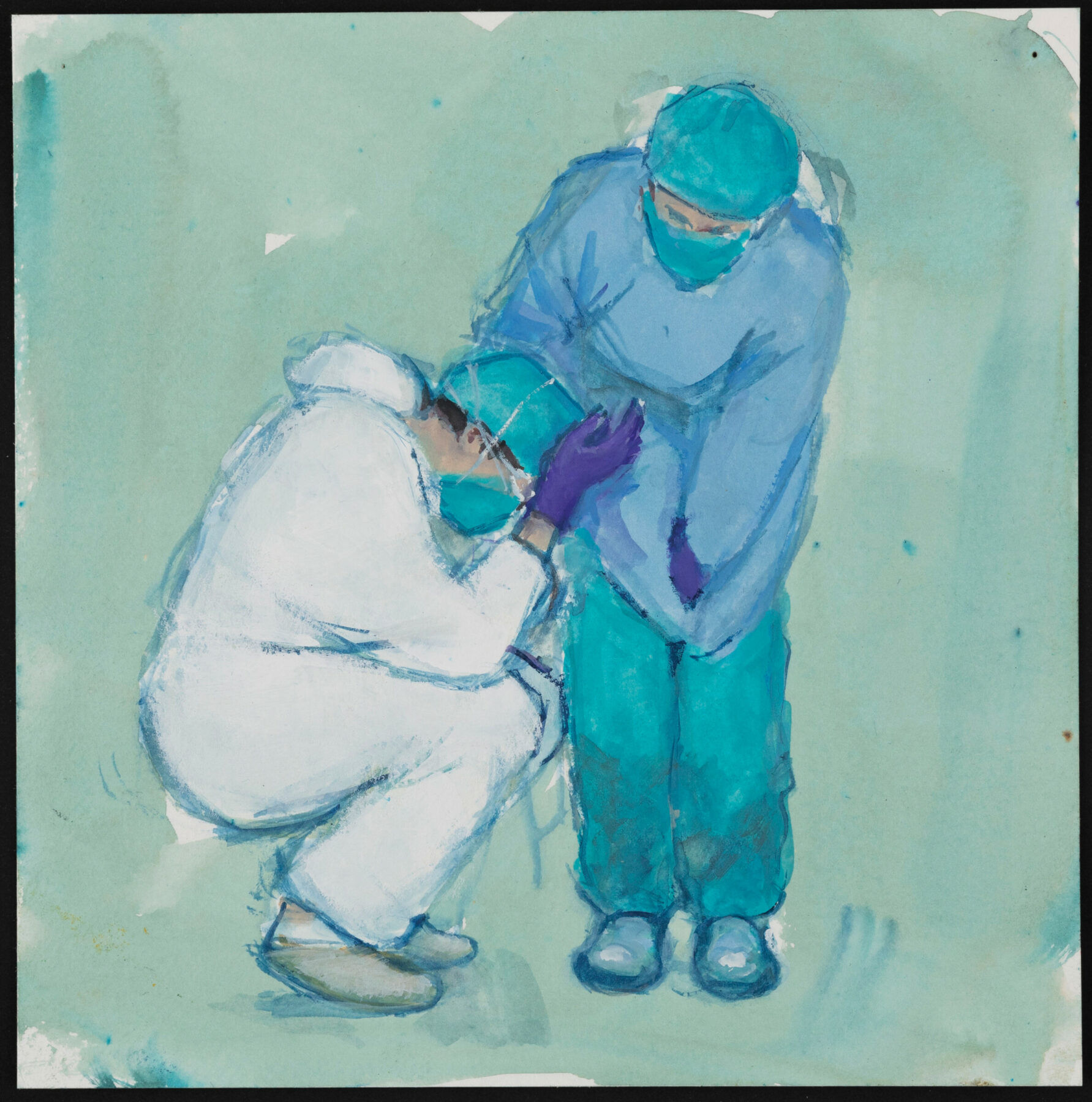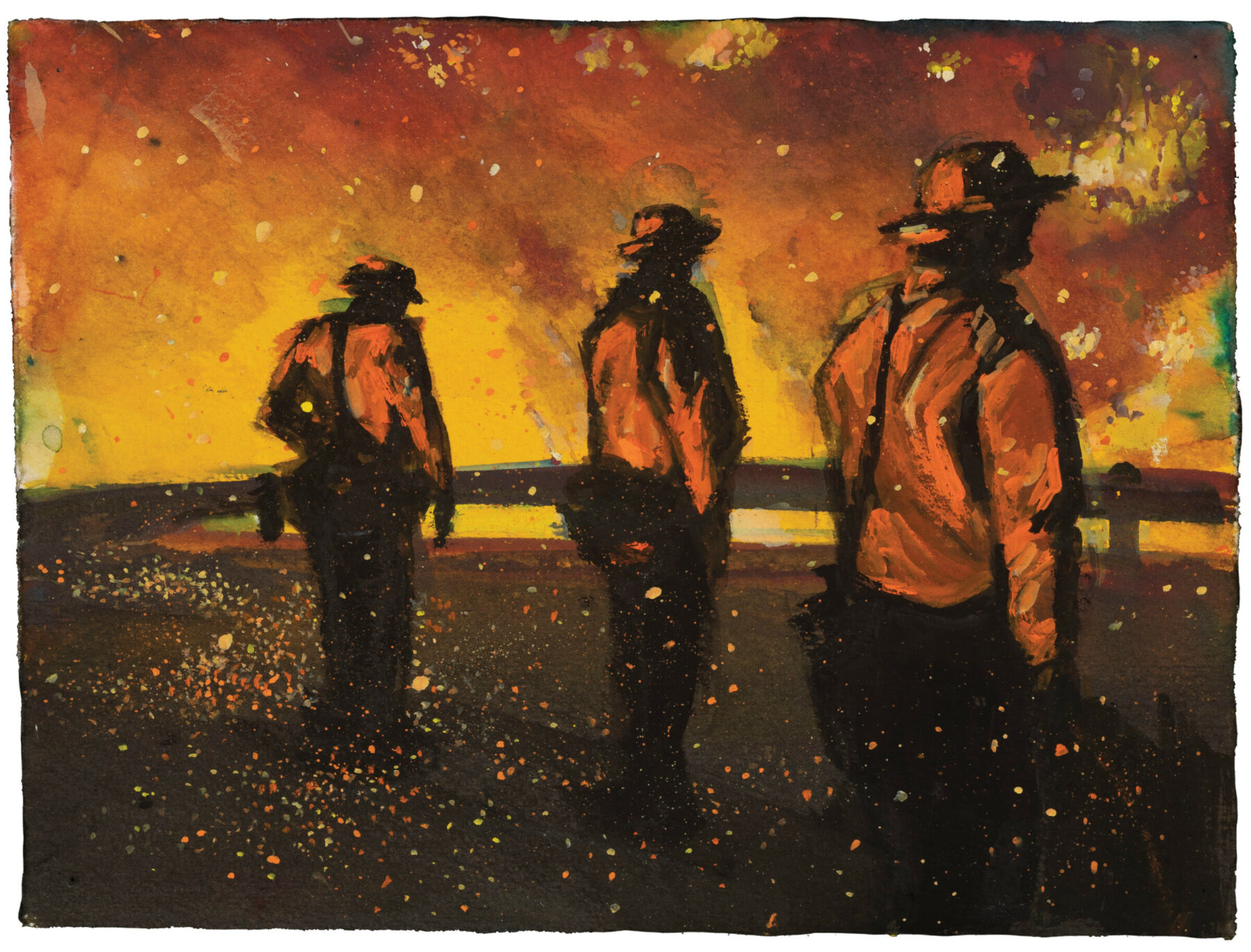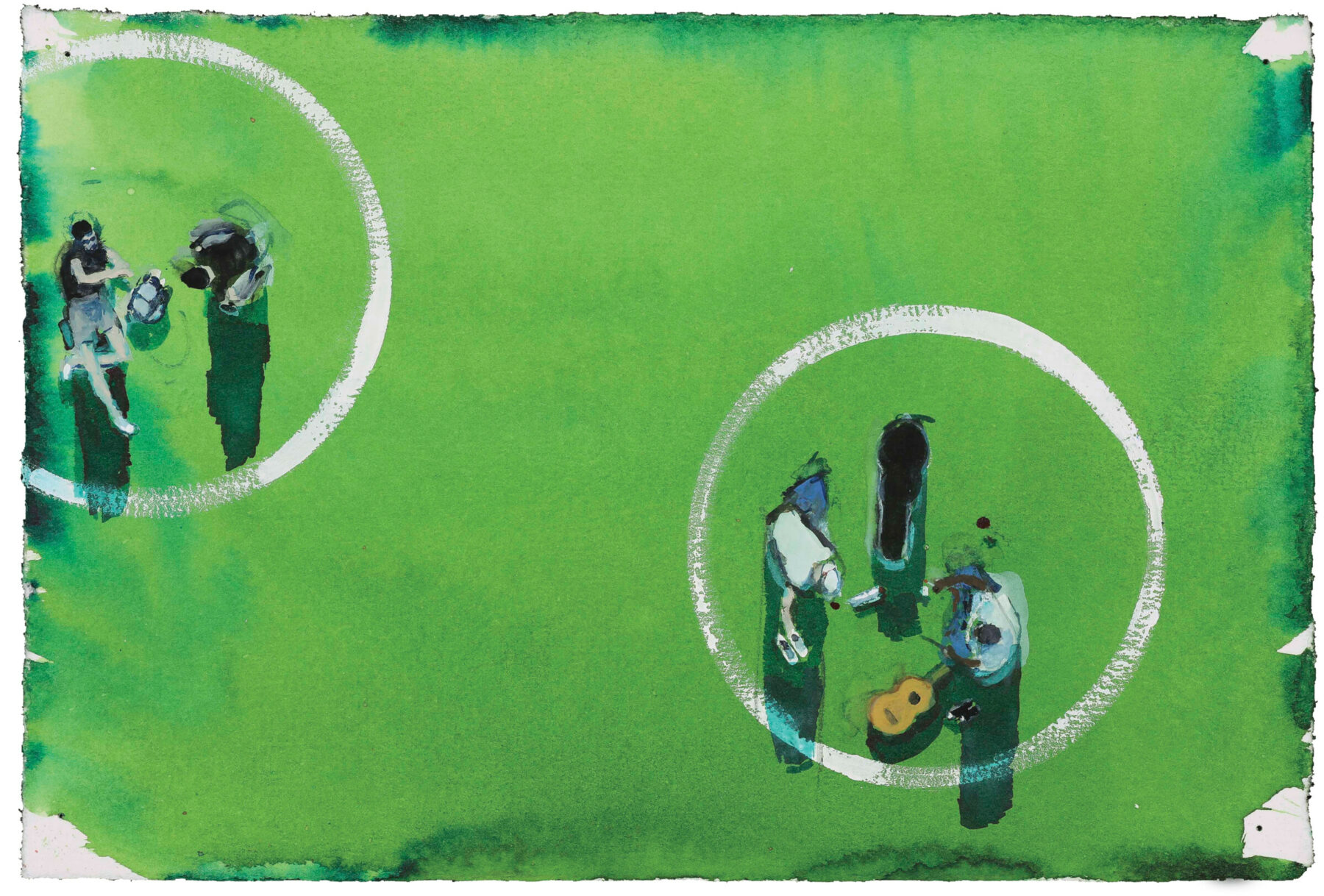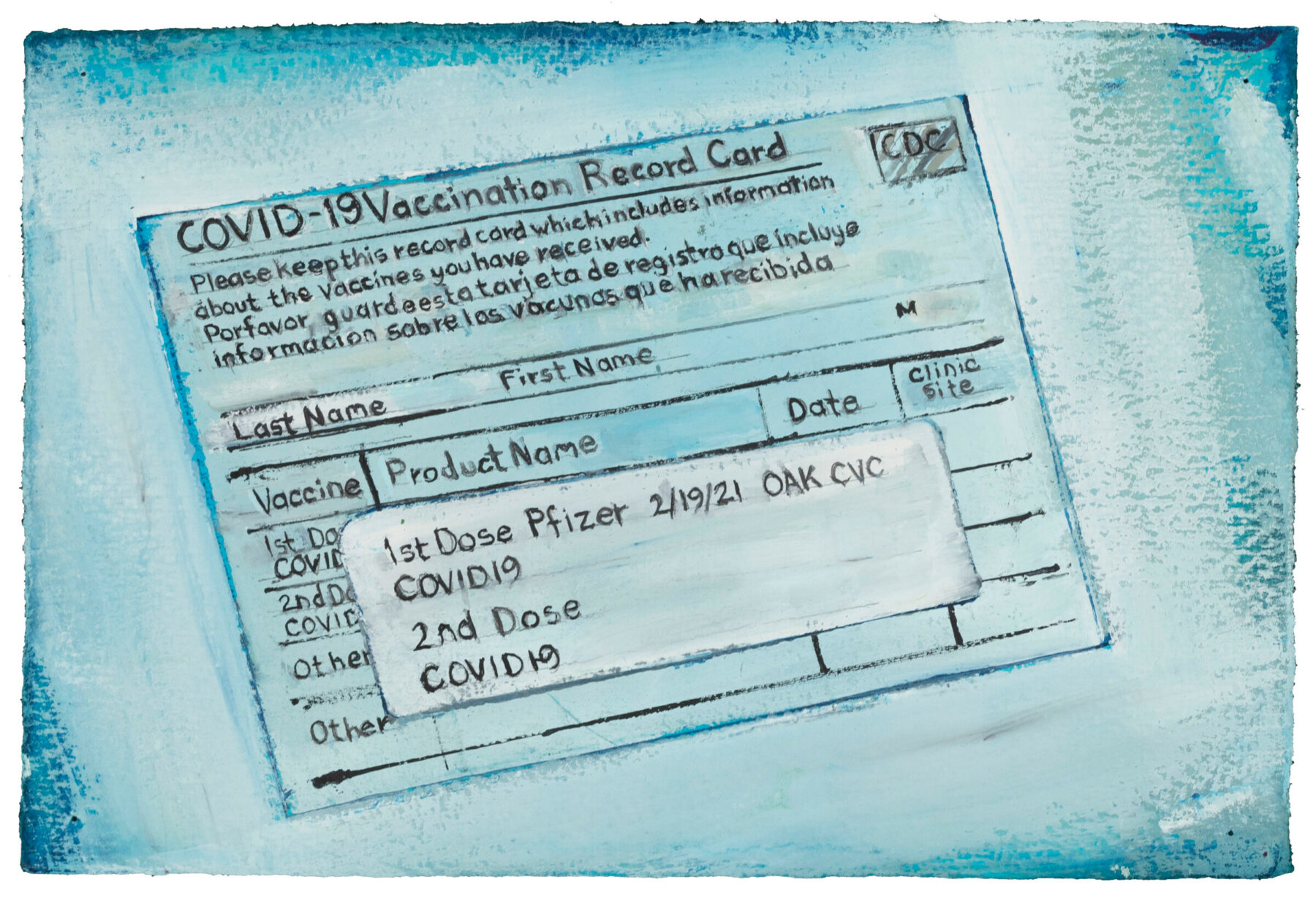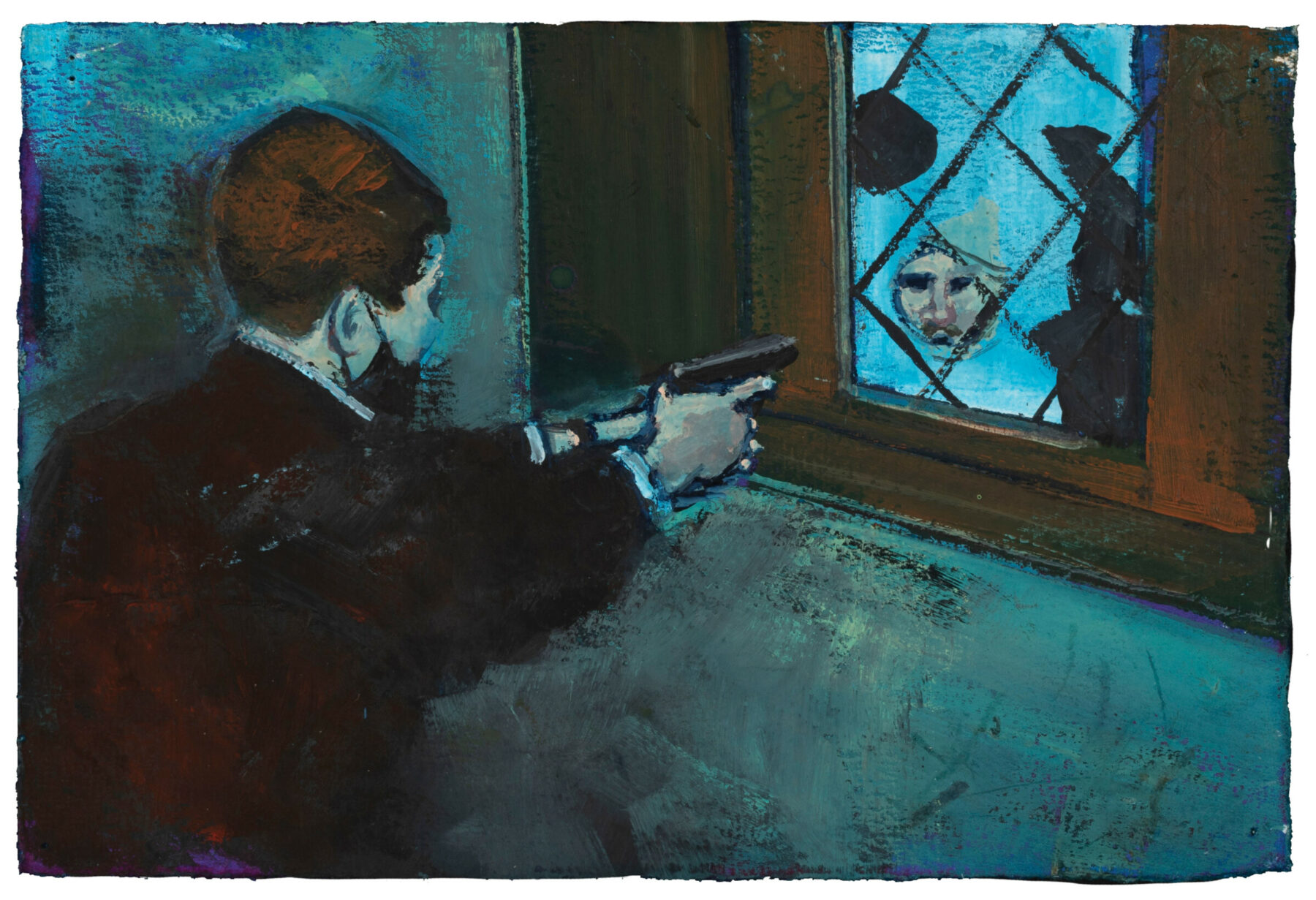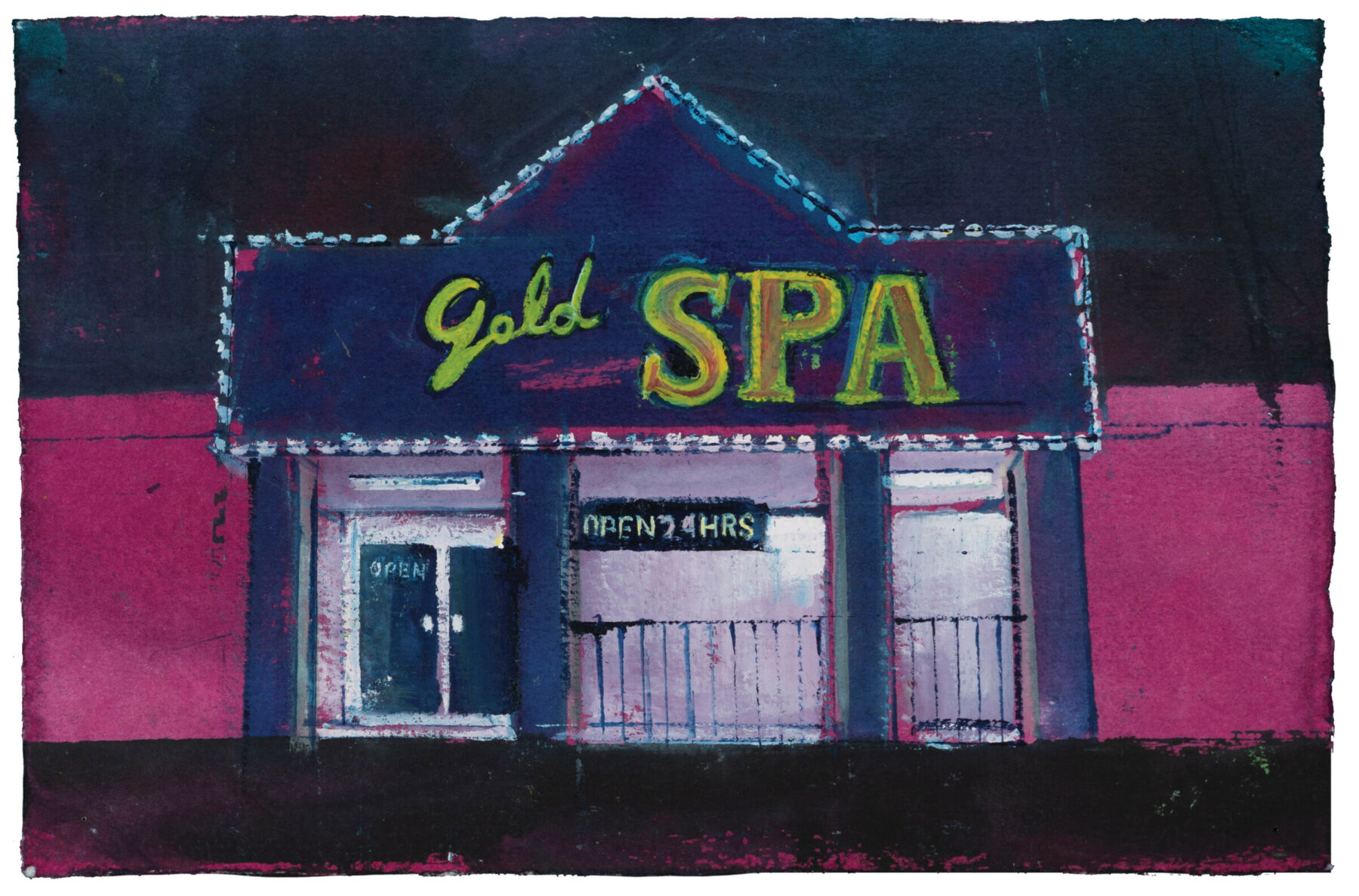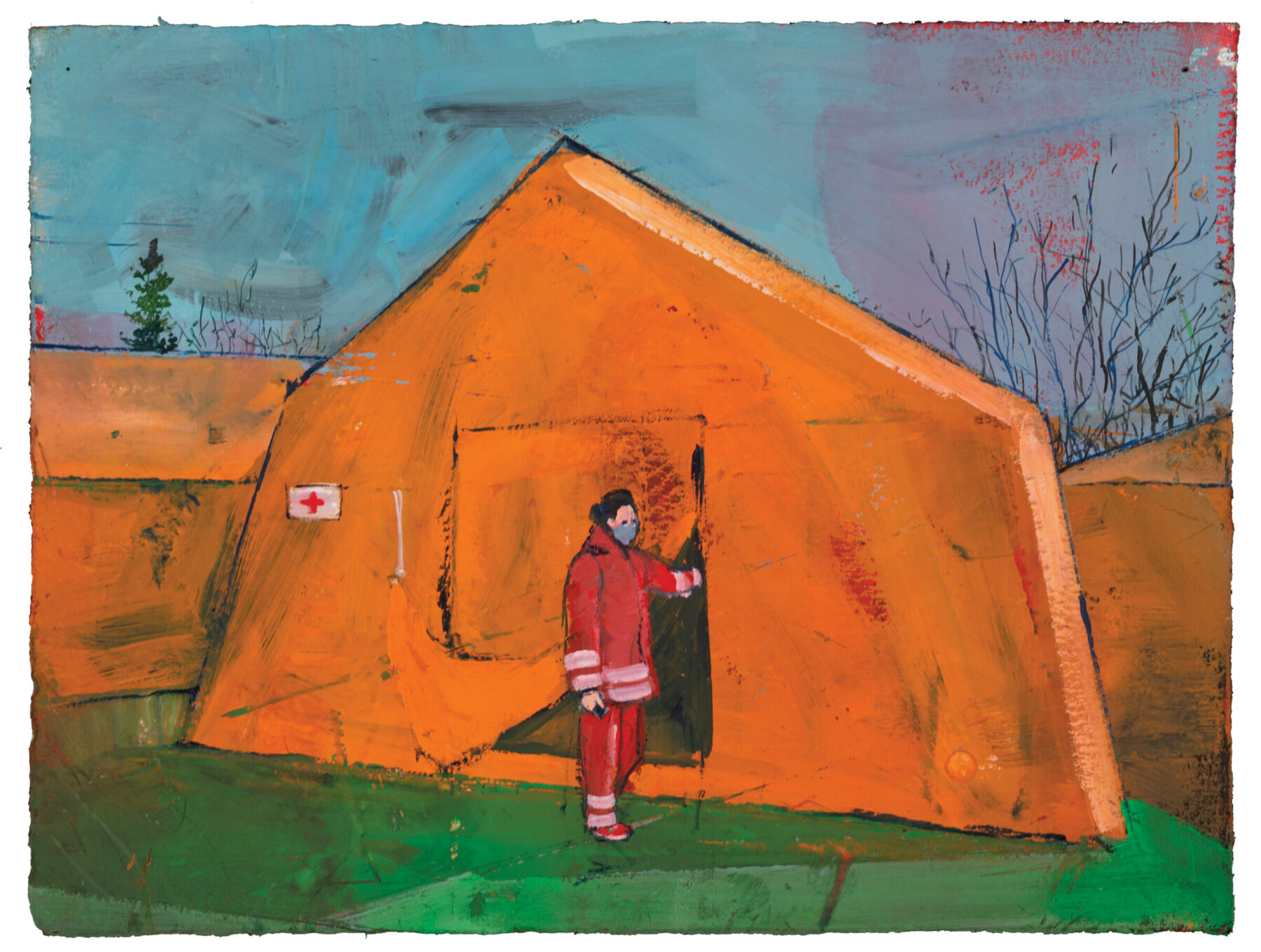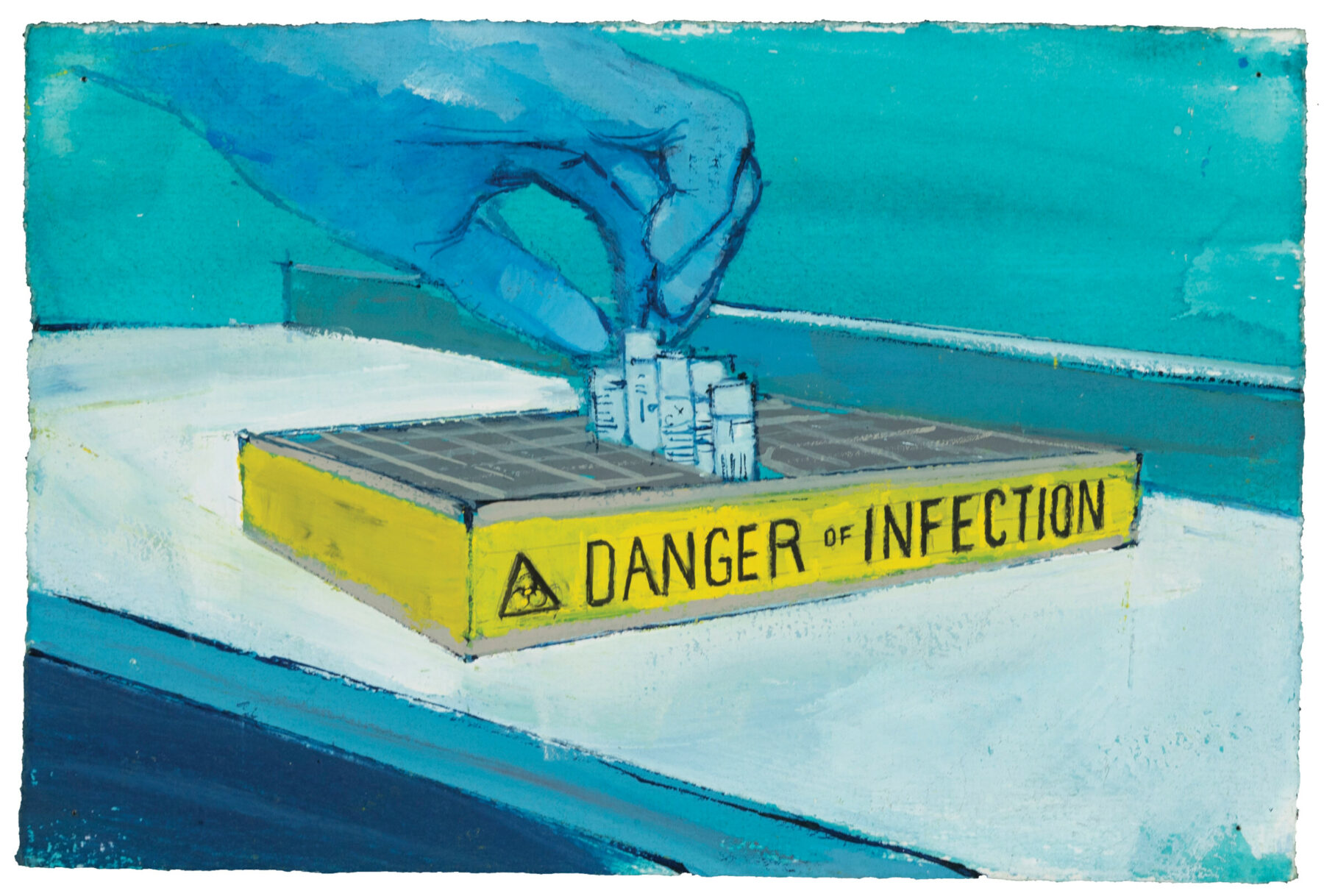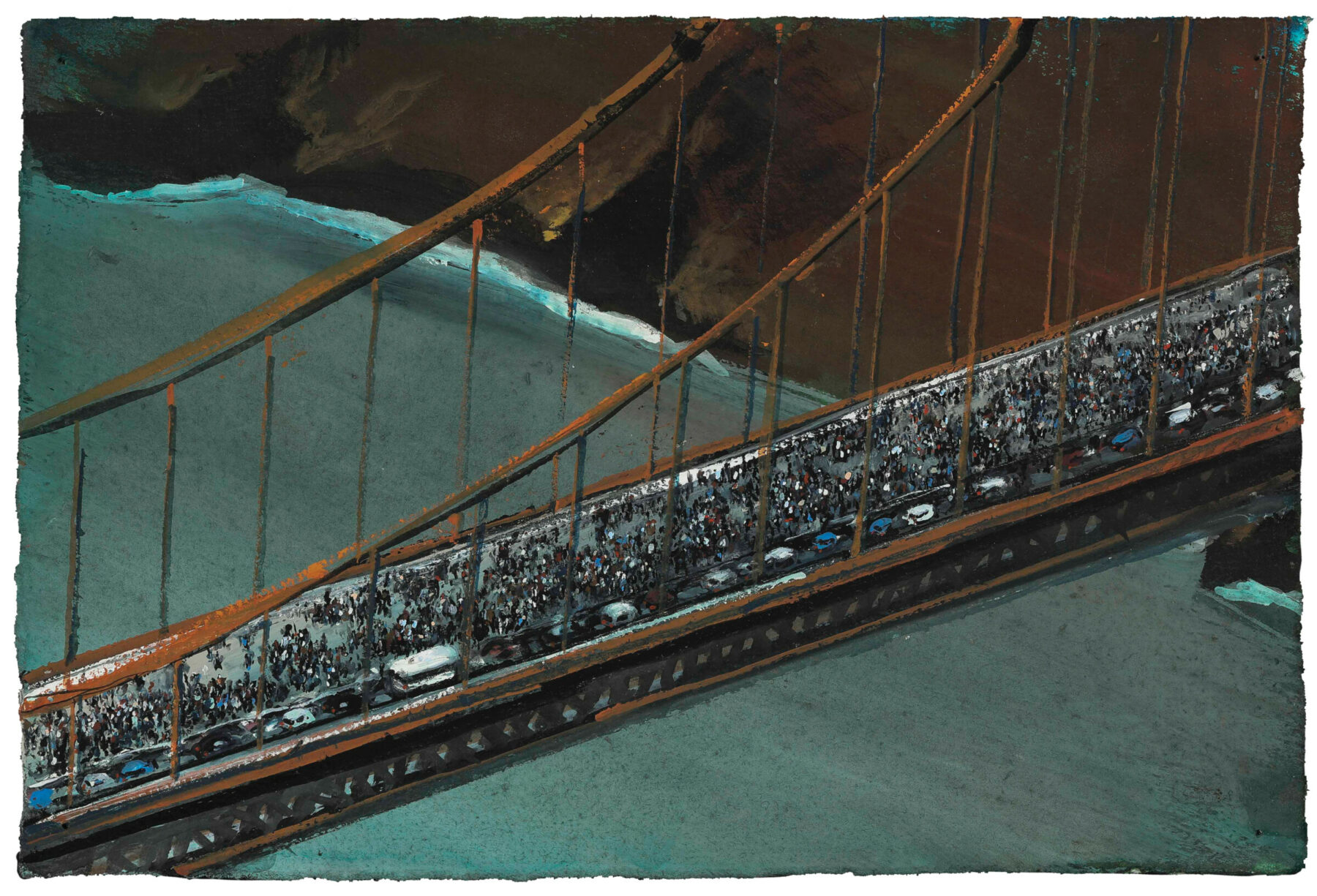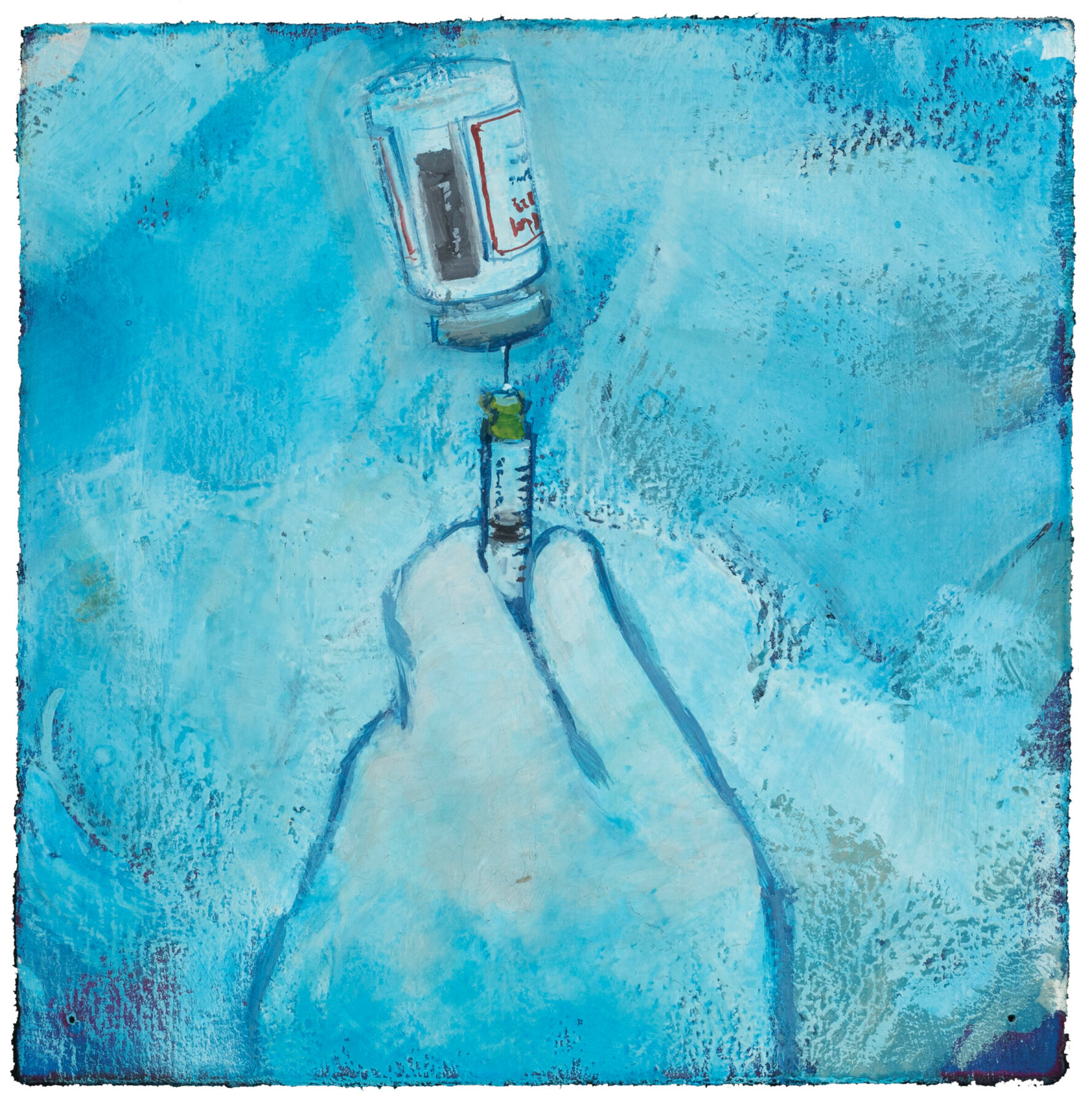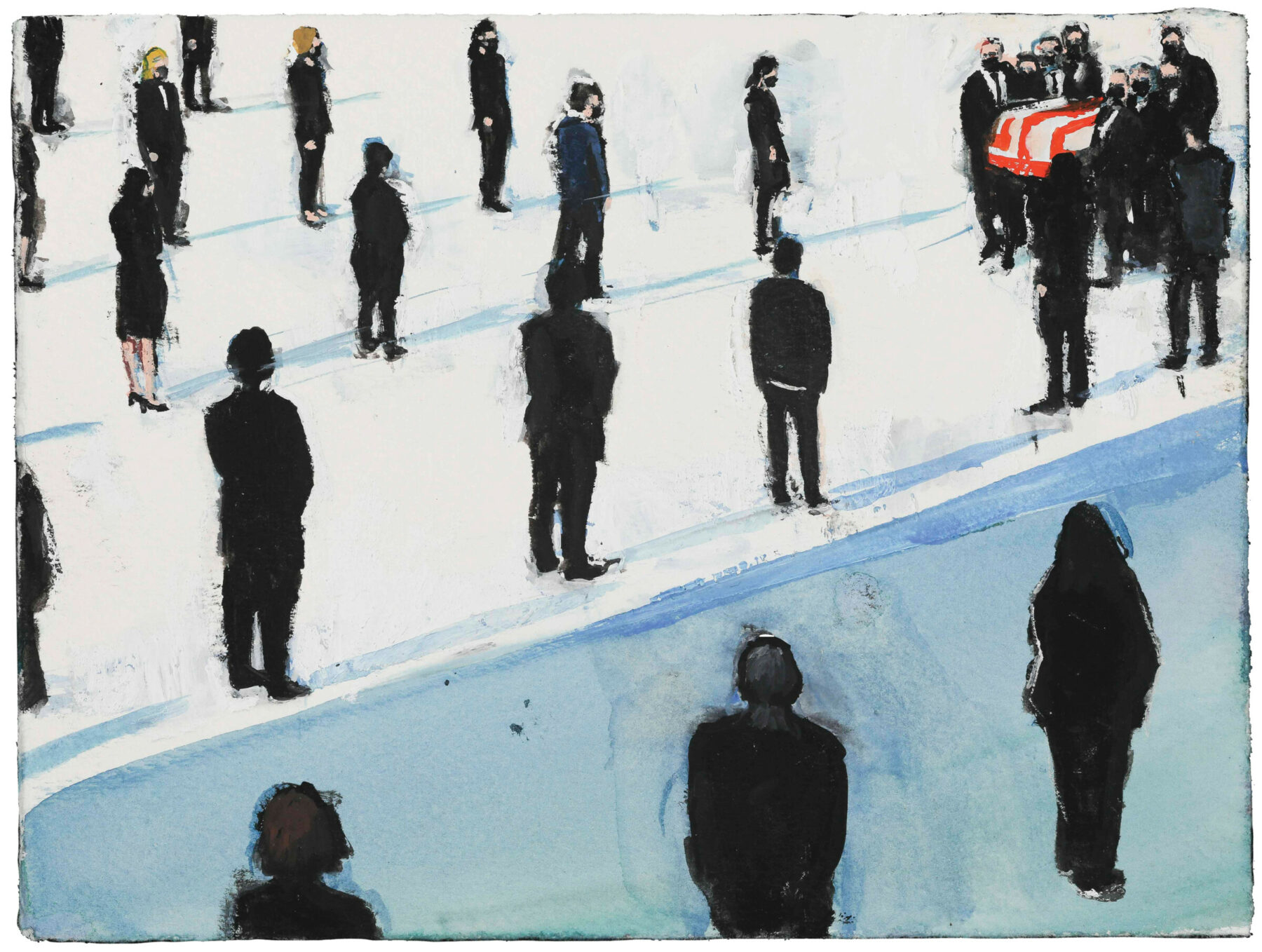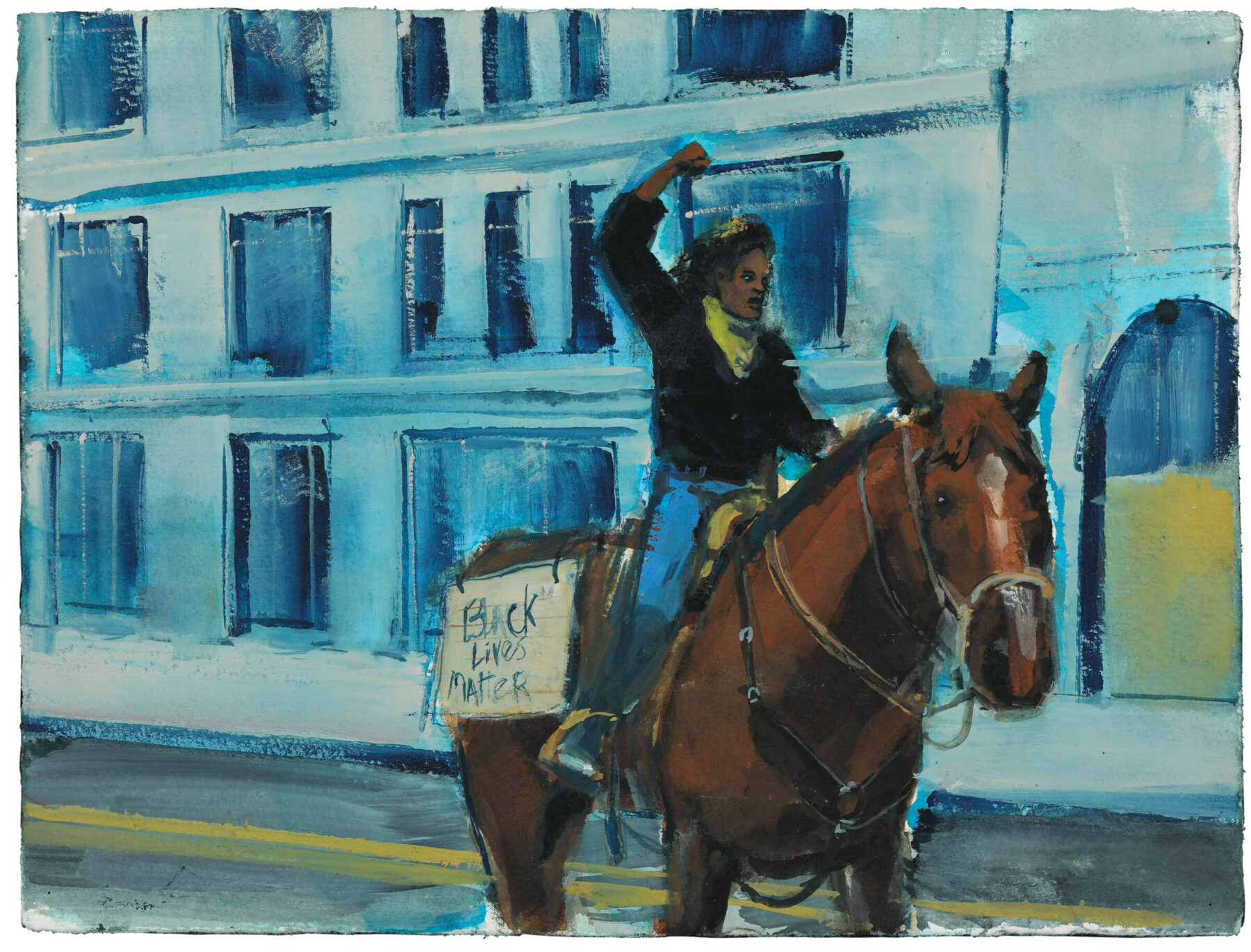COVID Artifacts

It’s been more than a year since the pandemic started. Now that vaccines have arrived, a measure of hope has returned. But memories of the early days of the pandemic lie close to the emotional surface for many of us.
As San Francisco Bay–area artist James Gouldthorpe recalls, “At the start of the pandemic there was this video that went around of this nurse showing you how to disinfect your groceries. Every item was wiped down. It was a bit excessive but back then we didn’t know. My wife and I went on our first trip to the grocery store and we came back and spent over an hour wiping down every item. That was when it started to occur to me that the things that we’ve taken for granted, our regular daily items, had suddenly become this sort of vector for death. We had no idea how dangerous these things were now. Suddenly a bag of potato chips could kill you. I got the urge to represent that somehow, and so I sat down and painted a bag of groceries, which now was weaponized. It was this terrifying thing that we had that was part of our daily lives. It had this feeling of danger around it. I discovered that painting in my studio kept me from spinning out. It started to really help my mental health.”

This weaponized grocery bag was the genesis of Gouldthorpe’s COVID Artifacts. He painted a visual journal of daily moments on pieces of paper slightly larger than a postcard using a mixture of watercolor, gouache, and ink, to create what he refers to as “journalistic snapshots.” With his brushes, he began recording what was happening in the world—as well as the fears, and sometimes the absurdities, experienced in his own life. (The rush on toilet paper continues to baffle him.)
The series of images, which creates a narrative from daily details of the pandemic, is currently on view at the San Francisco Museum of Modern Art in an exhibit called Close to Home: Creativity in Crisis. Individually, Gouldthorpe’s paintings are snapshots, but together they preserve the story of life during a grueling and often surreal pandemic year—political conflicts, hospital scenes, California wildfires, Black Lives Matter protests, public events, personal grief.
Dominic Montagu, professor of epidemiology and biostatistics at the University of California, San Francisco, and a longtime friend of Gouldthorpe’s, saw the paintings for the first time at the SFMOMA exhibit. “A lot of epidemiology—a lot of biostatistics—is not thinking about individuals,” Montagu observed. “We look at aggregate, we look at infection rates, at mortality rates per hundred thousand. It’s quite powerful to have a collection of images that breaks you out of that and forces you to think about the human context, the human importance. As an epidemiologist, each new worry meant I had something new to focus on—I could control it by understanding it. But each traumatic episode got replaced by a new trauma and focusing on the infection numbers and the statistics or the mechanisms of infection became a way of avoiding those traumas. Everything else got forgotten. So it was an amazing thing to look at all of James’s paintings and have all of these memories come rushing back.”
“I sat down and painted a bag of groceries, which now was weaponized. It was this terrifying thing that we had that was part of our daily lives. It had this feeling of danger around it.”
For Gouldthorpe, painting was his way of dealing with the stress and making sense of what was happening in daily life. He took moments during the pandemic and honored them with a sort of permanence by creating a painting—a less ephemeral object, which exists in the world differently than an image on a news website. But after he had a collection of these paintings, he wondered how they would “live” and function in the world. What would they mean to the viewer?
So when people came to SFMOMA’s gallery, Gouldthorpe observed the visitors carefully. He noticed how often people would point and share their own stories with one another. “People are definitely finding a collective memory in the face of a shared near apocalyptic event,” he says. “It’s now sort of this archive of the pandemic.”
Text by J. D. Talasek

